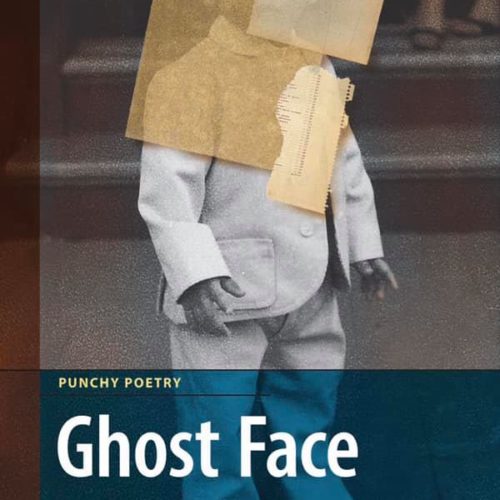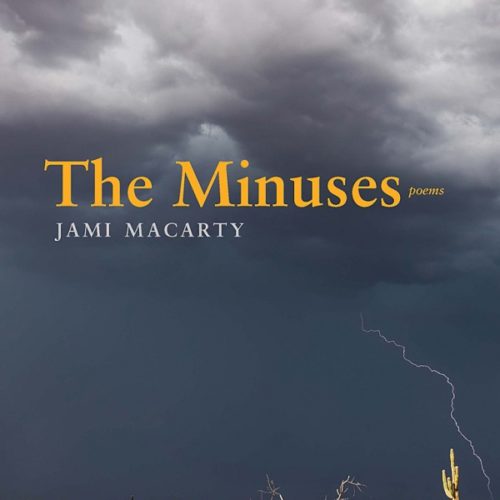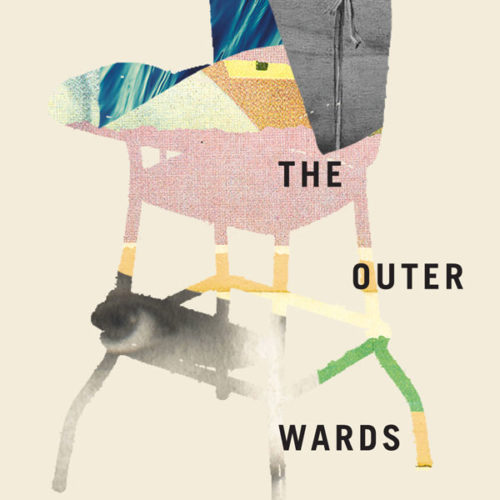THREADS OF A NETWORK: A CONVERSATION WITH MATTHEW JAMES WEIGEL
INTERVIEW BY ROSIE LONG DECTER
This interview has been edited for length and clarity.
Matthew James Weigel is an artist of many disciplines. His work includes poetry, visual art, and scholarly research, projects that he weaves together through explorations of colonial violence and acts of witnessing. Across forms and genres, Weigel repurposes the archive and turns the official record in on itself, revealing it as something coercive and constructed. His work is interested in partials and gaps; how materials decay and narratives extend. In his chapbook It Was Treaty / It Was Me, winner of the 2021 bpNichol Chapbook Award, as well as his debut collection Whitemud Walking (Coach House Books, 2022), Weigel uses the openness of poetry to draw connections across time and space, sharing family stories that refuse a linear telling. Taken together, these works become part of an intricate network, unfolding along all paths. In the introduction to Whitemud Walking, he writes:
The nature of this spiralling is also a returning. As the stories expand they revisit. In these back and forward movements each story leaves impressions on the others. And the world leaves marks upon them all.
Rosie Long Decter (RLD): Your creative projects blend traditionally distinct forms like poetry, prose, visual art, and archival documentation. The effect for me as a reader in It Was Treaty / It Was Me and Whitemud Walking is to create a kind of collage. You’ve referred to this in the past as research creation—why this approach? Why bring poetry to the archive and to visual art and documentation?
Matthew James Weigel (MJW): The quick and easy answer is that I started out as a poet. When I came to creative writing, it was a medium that I felt very comfortable in. So that was naturally the lens that best suited viewing these projects.
But the more complicated answer is that poetry is a very effective medium for synthesis, for making succinct and clear representations of what are very complex and heavy subjects. So I think that poetry as an initial lens lends itself well, especially because it is so expansive on top of that. “What is a poem?” is a very common question that poets will sometimes ask themselves, and because poetry is so limitless and expansive in its capacity to tell stories and bring people in it can be extremely effective. Also because it can be whatever you want it to be.
RLD: Do you find when you’re working with these different forms together or bridging them at the same time, you’re often surprised by what’s generated? Does it open up new possibilities that you hadn’t initially expected?
MJW: Definitely. There are many times when a poem isn’t working and you have to take a different approach. That’s maybe one of the great things about poetry—it allows you to sort of play and open up new doors that you weren’t necessarily expecting when you started a particular poem. I think for my work, which tends to start out so heavily in research, it’s not always obvious what the final form of the poem will or should look like. Even when it’s done, that doesn’t necessarily mean that was the best option. There’s obviously an infinite variety of ways to write a poem and you’re just looking for the one that fills the moment to its best capabilities.
RLD: In your process are you often starting with the archives and working toward poetry?
MJW: I don’t know if it’s a really linear path in that regard. I would say that the research tends to guide a lot of the work that I do. It gives it kind of a foundation or a grounding that I can come back to, and that inevitably runs across tangents and branches and different paths that I might take later in different work, or might follow as far as they can go in the particular poem or piece that I’m working on. So I would say that they tend to knot around each other and layer. Collage is a good way to put it, it’s never been a word that I would’ve thought to use but I think it’s a very fitting one.
RLD: I guess it’s never so straightforward as “I started here, and I ended up here.”
MJW: Yeah, and I think that speaks both to poetry in general but also the complications that inevitably arise when you’re dealing with this material, which is a very intense investigation of colonial practices and colonial violences. They have their tendrils in so many different things. I’ve found myself finding connections that I didn’t expect.
RLD: Can I ask about those specific connections?
MJW: I like to look at it as these threads that weave together, and any time you tug on one thread it’s inevitably tugging on a whole network of other things. One in particular happens to be Lord Strathcona, who I would say is a very key figure and who actually has a strong connection to Montreal—he was connected with McGill University I believe.
Even then that’s just one example. I’m living in a neighbourhood named after this person who was affiliated with a university in your neck of the woods. It’s just this incredibly expansive network that is constructed off of the exploitation and dispossession of the land and the people who live here. So it’s very easy to find these connections, and they become very personal very quickly as I inevitably continue to find connections with my own family history intertwining with these colonial violences. The violence wasn’t a historical process but one that affected people and families and those obviously reverberate down the years, because we’re still here.
RLD: I wanted to ask about that as well. You’re very clear in your work that the historical and the archival are ongoing and deeply embedded in individual people and communities. Even the title It Was Treaty / It Was Me refuses to separate those processes, and also refuses to separate them from the land as well. So how do you navigate that relationship between these deeply personal implications and the broader historical context?
MJW: Sometimes I do that better than other times; it can be extremely difficult. Because we’re talking about genocide, we’re talking about dispossession and oppression. These are recorded in the land and in the body and these are marks that don’t go away. They’re not comfortable to encounter.
I like to say that it’s hard to give consent for research that you do that’s about yourself. Because you’re not necessarily aware of what you’re going to find when you start looking. For that reason, it can be very difficult and very important to go slowly and take care of yourself and do the work in a way that is safe. Which, again, is easier said than done.
RLD: In Whitemud Walking you refer to several libraries. Your dad’s library of CDs, your mom’s library of drawers, as well as the libraries of Canada that you’re researching in. There’s also a poem titled “List of Rules I Have Broken in the Archive.” What is a library to you, or what is the archive, and what is generated by breaking rules in these spaces?
MJW: That’s a bit of a resistance to the violent archival practice and cataloguing practice that a state like Canada, and many other states of course, practice. For me to think of the land or the world around me as a library, it’s a way of thinking of how things are recorded. How do those stories connect and how are they shared? It functions as a resistance to the archival practice of the state, which so often excludes people from either coming to this knowledge or witnessing or experiencing it. As those stories and that knowledge is sequestered by universities, libraries, archives, etcetera, there’s something that is very much lost.
RLD: I really liked, conversely, this idea of your dad’s library and your mom’s libraries—that we all have libraries that are not being regulated by the colonial state in the same way.
MJW: Definitely, and this is not to say that all stories are open for everybody, but that the laws and traditions of cultural knowledge should be respected. When those are breached by the state for purposes of sequestering knowledge or maintaining a particular narrative, like with the case of Canada historicizing the treaty relationship by saying that it’s a historical thing rather than a living and constant negotiation, then that’s when things get really bad and really dangerous, because those relationships being alive are what keep people sustained in the first place.
RLD: In your work with the archives, and in reproducing archival texts in your creative projects, you’re not just photocopying them and scanning them into a book. You’re playing with them, you’re repurposing them, reworking them. Do you find that that’s a healing or liberating act, or that it has those possibilities in it, or is it more about the act of bearing witness? What do you get from that process of playing with the archives?
MJW: I get a lot of different things. I think it really depends on the piece and it depends on the purpose of what I’m trying to say. On the one hand it’s about demonstrating positionality, how my perspective of something is different from the “official record” of something, and that position is influenced by all of the vast networks of my relations. And that’s different for everybody, but at the same time there’s an importance to that witnessing act.
I don’t want to say that these things are buried and I’m discovering anything. These are documents that are catalogued, more often than not. There’s a record of them and we know where they are. The question is just: How do you get those stories that are locked away into view? In some ways that’s the job of the artist: to share these stories in a way that is most beneficial or most pertinent to the moment that you’re telling them in.
RLD: There’s a line in Whitemud Walking where you write: “I wonder about who the archive is for.” With these projects, do you have a reader in mind when you’re working on them?
MJW: I think I’m constantly trying to understand who the reader needs to be. I’m not the kind of person who is just making this work for myself.
RLD: Some artists approach it as, “I don’t want to think about the outside world, this is my internal thing,” and that’s one way of doing it. But I’m always curious if artists have other audiences in mind.
MJW: One thing that’s also very commonly said is, “I wrote the poem and it went and did its own thing,” or something to that effect. While I respect that process and that point of view, the story that I’m telling is very different and has a different function in the world. In order for me to honour that story in that act of witnessing, it’s not just about being present, which is one aspect of witnessing, but also sharing and bringing that story to others, which is extremely important to me.
RLD: How did Whitemud Walking come together? Was it a specific concept you wanted to explore in one book or did it come together as a collection of different works?
MJW: That’s a story that doesn’t have a very interesting answer. It’s largely just a collection of the thoughts and works that I’ve done over the past two and a half years. This story gets told in the book, but essentially what happened is: I saw a copy of the Treaty 6 parchment that’s at the University of Alberta in our special collections. There were all of these mysteries about when was it printed, who was supposed to get this but didn’t, how did it get to the university, why is it in a basement locked up? I wanted to answer some of those questions.
I actually haven’t answered any of those questions, however it’s raised a lot of other questions. I come to those questions because of my own personal history and family history with treaty. My great-great-great-great-great-uncle signed that exact document, so it’s important for me to remember that I have a personal family stake in this story. So that just kind of kicked off a whole journey of going to various places and hearing people speak and talking with folks, and then this book is the collection of all of those processes up to this point. There’s definitely a lot more to go.
RLD: There’s more to be done.
MJW: It’s not something that’s ever going to be done. I think in the same way that treaty is an eternal process that can never be historicized, I can’t ever be finished this work. And that’s a very challenging position to sort of understand.
RLD: For the record, that’s not a boring answer to the question.
Working with visual art and also working with archives—those are very physical and tactile practices. How does that affect your poetry practice? Do you think about language in terms of its physicality and its texture? Is there a relationship there?
MJW: Definitely. To build off a previous answer, where I mentioned that because poetry can be anything you can tell these stories in so many different ways—just one of those ways is to read it. I think it’s very important that the spoken word tradition is honoured. Not all of my poems can be read out loud, but those that can I want to perform and deliver in as honest a way as possible.
But also when I make books or I construct visual art, I think it’s very important that not only are these stories shared in as many ways as possible, but that those ways are accessible. One way is not necessarily accessible for everybody, so if I can tell these stories in different ways using different modes of expression, then that’s just an expansion of the accessibility of these stories.
RLD: In working with these archival records, you’re also taking the reader through a lot of different moments in time and space. You’re traversing past and present, giving us the dates and the facts and pointing out the contradictions of land ownership as well. How would you locate yourself within this spatial/temporal field? What helps you stay grounded as you travel through this immense history?
MJW: That’s kind of the question, I think. And the one that I have the absolute fewest amount of answers to. It’s impossible sometimes to find groundedness. But at the end of the day I am very very fortunate to be in the place that I am. If I look out my window I can see the old Fort Hill road, which is basically an ancestral trail that folks would go down to the North Saskatchewan River in order to find a safe place to cross where there’s flat land. The river is very dangerous, and so this crossing is something that one would only do when one was ready and when you’ve waited for the conditions to be right.
Being here in this place and being able to look out on this place where ancestors have crossed the river, have been, that’s about as grounded as I can get. I think that that is a tremendous privilege that most people don’t have. There’s a lot of displacement and diaspora that happens and continues to happen. Even most of my family isn’t from here. But for me to be here in a position of having returned, or come back as a descendent of people who were here and have gone elsewhere, that’s an immense privilege and a grounding that I try not to take for granted. This place means a great deal to me and it’s important to honour that as best I can.


